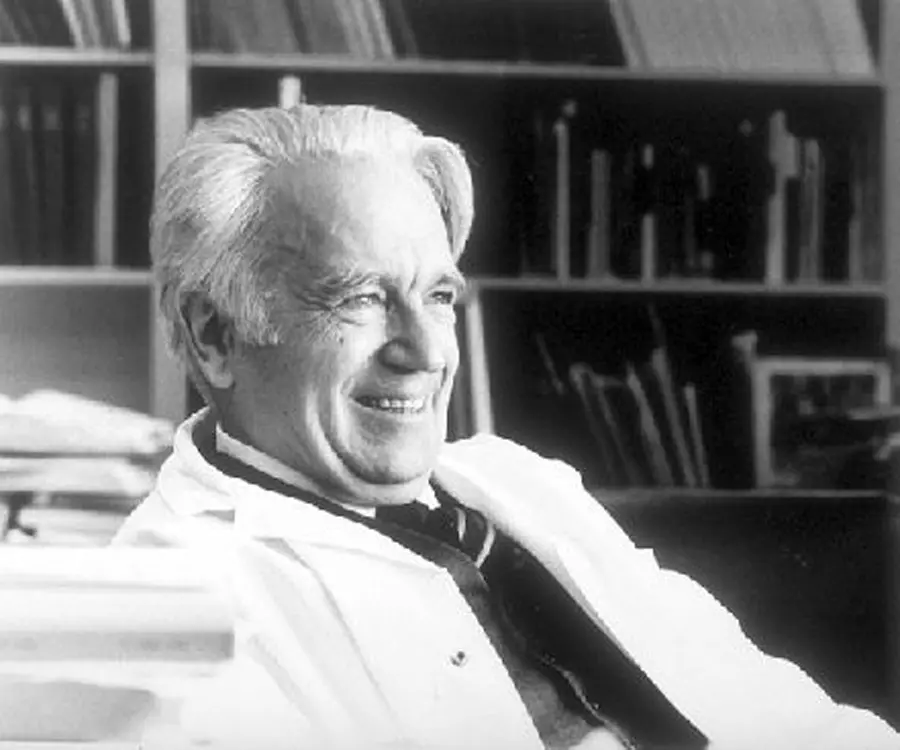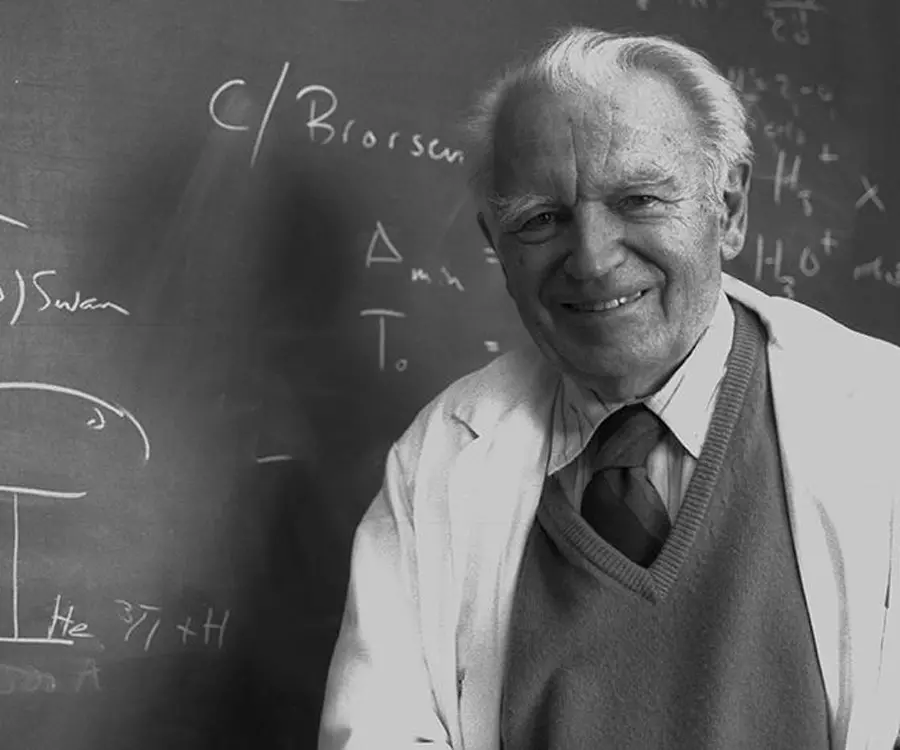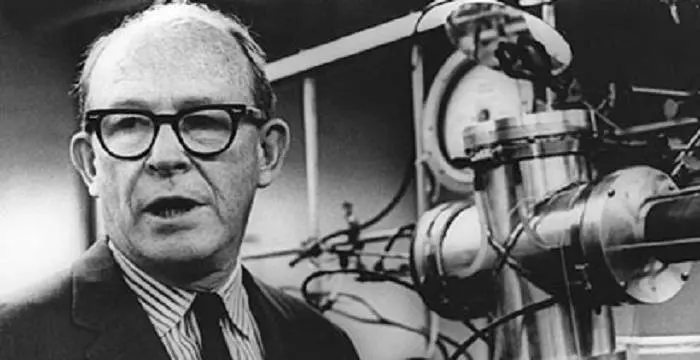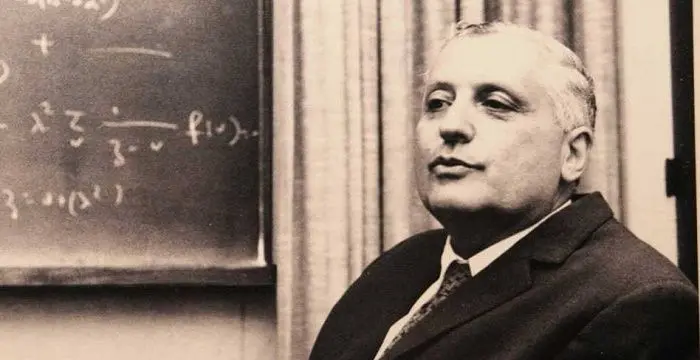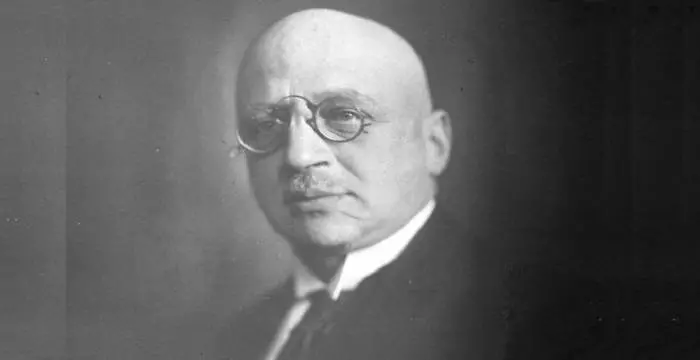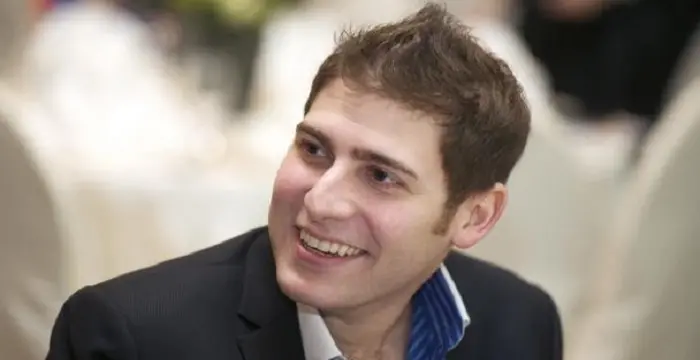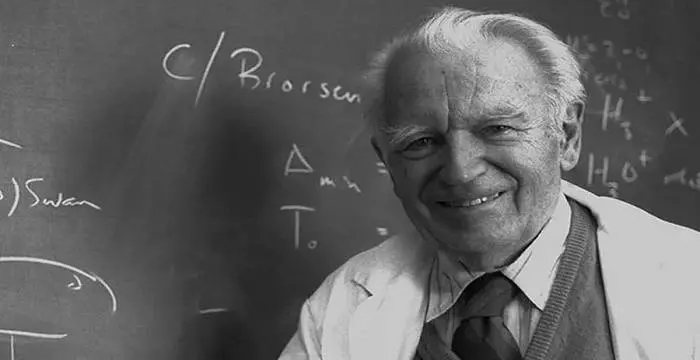
Gerhard Herzberg - Physicists, Facts and Personal Life
Gerhard Herzberg's Personal Details
Gerhard Herzberg was a Germany-born Canadian physicist who received the Nobel Prize in Chemistry in 1971
| Information | Detail |
|---|---|
| Birthday | December 25, 1904 |
| Died on | March 3, 1999 |
| Nationality | Canadian, German |
| Famous | Scientists, Physicists, Chemists, Physical Chemists |
| Spouses | Elisabeth Tenthoff, Luise Oettinger |
| Siblings | Walter |
| Known as | Gerhard Heinrich Friedrich Otto Julius Herzberg |
| Childrens | Agnes Margaret, Luise, Paul Albin |
| Birth Place | Hamburg, Imperial Germany |
| Born Country | Germany |
| Gender | Male |
| Father | Albin H. Herzberg |
| Mother | Ella Biber Herzberg |
| Sun Sign | Capricorn |
| Born in | Hamburg, Imperial Germany |
| Famous as | Physical Chemist, Physicist |
| Died at Age | 94 |
// Famous Chemists
Henry Cavendish
Henry Cavendish was a theoretical chemist and physicist, renowned for discovery of hydrogen and calculation of the mass of earth. To know more about his childhood, profile, timeline and career read on
Walter Kohn
Nobel Laureate Walter Kohn was an Austrian-born American theoretical chemist and physicist. Check out this biography to know about his childhood, life, achievements, works & timeline.
Jabir Ibn Hayyan
Jabir Ibn Hayyan was a medieval era polymath. Check out this biography to know about his life, works and achievements.
Gerhard Herzberg's photo
Who is Gerhard Herzberg?
Gerhard Herzberg was a Germany-born Canadian physicist who received the Nobel Prize in Chemistry for his pioneering work in molecular spectroscopy in which he used the absorption of light by molecules and atoms to discover their geometrical patterns and electronic structures. He was born in Germany but fled from Germany when the Nazis came to power to avoid persecution because of his Jewish wife. His wife was a spectroscopist and collaborated with him during his early experiments. He was a brilliant scientist who sometimes designed his own spectroscopic methods to explain the structures of polyatomic and diatomic molecules, free radicals and astronomical objects which was difficult to obtain by any other method. Though he was a physicist, his work was of immense value to the field of physical chemistry and quantum mechanics as they dealt with the energy states and the internal geometry of molecules. He was the first Canadian to receive the Nobel Prize. Though he was asked to retire when he reached the age of sixty-five, he refused to do so, and was promoted to Professor Emeritus. He carried on with his research work for full-time as long he was fit and healthy till the time he died.
// Famous Physicists
Henry Cavendish
Henry Cavendish was a theoretical chemist and physicist, renowned for discovery of hydrogen and calculation of the mass of earth. To know more about his childhood, profile, timeline and career read on
Walter Kohn
Nobel Laureate Walter Kohn was an Austrian-born American theoretical chemist and physicist. Check out this biography to know about his childhood, life, achievements, works & timeline.
Nikola Tesla
Nikola Tesla was a Serbian-American inventor, best known for his development of alternating current electrical systems. This biography of Nikola Tesla provides detailed information about his childhood, life, achievements, works & timeline.
Childhood & Early Life
Gerhard Herzberg was born in Hamburg, Germany, on December 25, 1904. His father was Albin H. Herzberg and his mother was Ella Biber Herzberg.
He had an elder brother named Walter.
His early life was very difficult as his father died in 1915 and his mother had to immigrate to America in 1922 to work as a housekeeper there.
He attended the ‘Liebig Oberrealschule’ high school in Frankfurt from 1915 to 1916.
He joined the ‘Johanneum Realgymnasium’ high school in Hamburg in 1924 from where he obtained an ‘Abitur’ which was required for admission into a university.
He studied at the ‘Technische Hoschule’ till 1928 with an industrial scholarship.
He completed his ‘Diplom Ingenieur’ in 1927 and got his Dr.-Ing from the ‘Darmstadt University of Technology’ in 1928 with the help of a federal scholarship.
He carried out post-doctorate research at the University of Gottingen during 1928 under James Franck and Max Born.
From 1928 to 1930 he did more research work at the ‘H. H. Wills Physics Laboratory’ under the ‘Bristol University, England’.
In 1929 he was the first scientist to give an accurate explanation of the chemical bonding that occurred at the electron level.
Career
Gerhard Herzberg returned to Germany and joined the ‘Darmstadt University of Technology’ as a ‘Privatdozent’ or lecturer in 1930 without getting any remuneration and worked there till 1935. Financial support came through fees from lectures and from the ‘Emergency Association of German Science’.
In 1935 he left Germany and moved to Canada as the Nazi regime in Germany debarred people with Jewish wives from their Universities.
He joined the ‘University of Saskatchewan, Canada’ in 1935 as a Research Professor of Physics and taught there till 1945.
In 1941 he became the first scientist to prove that ‘themethylidyne ions (CH+)’ were present in the interstellar clouds or the gas occupying the space between two stars.
In 1945 he joined the ‘Yerkes Observatory’ under the ‘University of Chicago’ as a professor of Spectroscopy and held that post till 1948.
He proved that hydrogen molecules are present in the atmosphere surrounding different planets in 1948.
He returned to Canada in 1948 and served as the Director of the Physics division of the ‘National Research Council of Canada (NRCC)’ from 1948 to 1955.
Herzberg was appointed the Director of the ‘Pure Physics’ department of the ‘National Research Council of Canada’ in 1955 and served in that post till 1969.
He was able to obtain the spectra of the ‘Methyl radical (CH3)’ in 1956 and the spectra of the ‘Methylene radical (CH2)’ in 1959.
He served as the President of the ‘Canadian Association of Physicists’ from 1956 to 1957 and the Vice President of the ‘International Union of Pure and Applied Physics’ from 1957 to 1963.
He also served as the President of the ‘Royal Society of Canada’ from 1966 to 1967.
In 1969 he was made ‘Distinguished Research Scientist Emeritus’ and held this post till 1974.
He served as the Chancellor of the ‘Carlton University’ from 1973 to 1980.
He became the Director of a new research facility named the ‘Herzberg Institute of Astrophysics’ in Ottawa in 1974 where he worked till 1995.
Major Works
His book, ‘Atomic Spectra and Atomic Structure’ was published in 1937.
His book ‘Spectra of Diatomic Molecules’ came out in 1939 while ‘Infrared and Raman Spectra of Polyatomic Molecules’ was published in 1945.
His next book ‘Electronic Spectra of Polyatomic Molecules’ was published in 1966.
Awards & Achievements
Gerhard Herzberg was made a member of the ‘Royal Society of Canada’ in 1939 and a ‘Foreign Member’ of the ‘Royal Society of London’ in 1951.
He received the ‘Henry Marshall Tory Medal’ from the ‘Royal Society of Chemists’ in 1953.
He was made a ‘Foreign Fellow’ of the ‘Indian Academy of Sciences’ in 1955.
He received the ‘Frederic Ives Medal’ in 1964.
He was awarded the ‘Companion of the Order of Canada’ in 1968.
In 1969 he was awarded the ‘Willard Gibbs medal’ by ASC and was also made a ‘Distinguished Research Scientist’ at NRCC.
In 1970 he received the ‘Faraday Medal’ from the ‘Chemical Society of London’.
He received the Nobel Prize in Chemistry in 1971.
In 1971 he also received the ‘Royal Medal’ from the ‘Royal Society of London’.
He was made a ‘Foreign Member’ of the ‘Indian National Science Academy’ in 1974.
In 1992 he was made a member of the ‘Queen’s Privy Council for Canada’ which equivalent to the British title. He started to be addressed as Honorable Gerhard Herzberg from then on.
Herzberg was made a ‘Foreign Member’ of the ‘American Academy of Arts and Sciences’, the ‘Optical Society of America’ and the ‘Pontifical Academy of Sciences’ and also a ‘Foreign Associate’ of the ‘National Academy of Sciences’.
He was made a member of the ‘International Academy of Quantum Molecular Science’.
The ‘Hertzberg Institute of Astrophysics’ in Ottawa has been named after him.
The ‘Gerhard Herzberg Canada Gold Medal for Science and Engineering’ offered to brilliant scientists by the ‘Natural Sciences and Engineering Research Council’ was started in his honor from 2000 onwards.
An asteroid has also been named after him which is called ‘3316 Herzberg’.
Personal Life & Legacy
He married Luise Oettinger, a Jew spectroscopist, on December 30, 1929.
He had had a son named Paul Albin and a daughter named Agnes Margaret from this marriage.
He married Monika Elisabeth Tenthoff on March 21, 1972 after his first wife died in 1971 a few months before he received the Nobel Prize. He had a daughter named Luise from this marriage.
Gerhard Herzberg died of illness in Ottawa, Ontario, Canada on March 3, 1999.
// Famous Physical Chemists
Willard Libby
Willard Frank Libby was an American physical chemist who was awarded the ‘Nobel Prize’ in Chemistry in 1960. This biography profiles his childhood, life, career, research, achievements and timeline.
Ilya Prigogine
Ilya Prigogine was a Russian-born Belgian physical chemist who was awarded the Nobel Prize for Chemistry in 1977. This biography of Ilya Prigogine provides detailed information about his childhood, life, achievements, works & timeline.
Fritz Haber
Fritz Haber was a German chemist who won the 1918 Nobel Prize in Chemistry for the synthesis of ammonia from its elements. Check out this biography to know about his childhood, life, achievements, works & timeline.
Gerhard Herzberg's awards
| Year | Name | Award |
|---|---|---|
Other | ||
| 0 | FRS (1951) | |
| 0 | Henry Marshall Tory Medal (1953) | |
| 0 | Nobel Prize for Chemistry (1971) | |
| 0 | Royal Medal (1971) | |
Gerhard Herzberg biography timelines
- // 25th Dec 1904Gerhard Herzberg was born in Hamburg, Germany, on December 25, 1904. His father was Albin H. Herzberg and his mother was Ella Biber Herzberg.
- // 1915 To 1922His early life was very difficult as his father died in 1915 and his mother had to immigrate to America in 1922 to work as a housekeeper there.
- // 1915 To 1916He attended the ‘Liebig Oberrealschule’ high school in Frankfurt from 1915 to 1916.
- // 1924He joined the ‘Johanneum Realgymnasium’ high school in Hamburg in 1924 from where he obtained an ‘Abitur’ which was required for admission into a university.
- // 1927 To 1928He completed his ‘Diplom Ingenieur’ in 1927 and got his Dr.-Ing from the ‘Darmstadt University of Technology’ in 1928 with the help of a federal scholarship.
- // 1928He studied at the ‘Technische Hoschule’ till 1928 with an industrial scholarship.
- // 1928He carried out post-doctorate research at the University of Gottingen during 1928 under James Franck and Max Born.
- // 1928 To 1930From 1928 to 1930 he did more research work at the ‘H. H. Wills Physics Laboratory’ under the ‘Bristol University, England’.
- // 1929In 1929 he was the first scientist to give an accurate explanation of the chemical bonding that occurred at the electron level.
- // 30th Dec 1929He married Luise Oettinger, a Jew spectroscopist, on December 30, 1929.
- // 1930 To 1935Gerhard Herzberg returned to Germany and joined the ‘Darmstadt University of Technology’ as a ‘Privatdozent’ or lecturer in 1930 without getting any remuneration and worked there till 1935. Financial support came through fees from lectures and from the ‘Emergency Association of German Science’.
- // 1935In 1935 he left Germany and moved to Canada as the Nazi regime in Germany debarred people with Jewish wives from their Universities.
- // 1935 To 1945He joined the ‘University of Saskatchewan, Canada’ in 1935 as a Research Professor of Physics and taught there till 1945.
- // 1937His book, ‘Atomic Spectra and Atomic Structure’ was published in 1937.
- // 1939 To 1945His book ‘Spectra of Diatomic Molecules’ came out in 1939 while ‘Infrared and Raman Spectra of Polyatomic Molecules’ was published in 1945.
- // 1939 To 1951Gerhard Herzberg was made a member of the ‘Royal Society of Canada’ in 1939 and a ‘Foreign Member’ of the ‘Royal Society of London’ in 1951.
- // 1941In 1941 he became the first scientist to prove that ‘themethylidyne ions (CH+)’ were present in the interstellar clouds or the gas occupying the space between two stars.
- // 1945 To 1948In 1945 he joined the ‘Yerkes Observatory’ under the ‘University of Chicago’ as a professor of Spectroscopy and held that post till 1948.
- // 1948He proved that hydrogen molecules are present in the atmosphere surrounding different planets in 1948.
- // 1953He received the ‘Henry Marshall Tory Medal’ from the ‘Royal Society of Chemists’ in 1953.
- // 1955 To 1969Herzberg was appointed the Director of the ‘Pure Physics’ department of the ‘National Research Council of Canada’ in 1955 and served in that post till 1969.
- // 1955He was made a ‘Foreign Fellow’ of the ‘Indian Academy of Sciences’ in 1955.
- // 1956 To 1959He was able to obtain the spectra of the ‘Methyl radical (CH3)’ in 1956 and the spectra of the ‘Methylene radical (CH2)’ in 1959.
- // 1964He received the ‘Frederic Ives Medal’ in 1964.
- // 1966 To 1967He also served as the President of the ‘Royal Society of Canada’ from 1966 to 1967.
- // 1966His next book ‘Electronic Spectra of Polyatomic Molecules’ was published in 1966.
- // 1968He was awarded the ‘Companion of the Order of Canada’ in 1968.
- // 1969 To 1974In 1969 he was made ‘Distinguished Research Scientist Emeritus’ and held this post till 1974.
- // 1969In 1969 he was awarded the ‘Willard Gibbs medal’ by ASC and was also made a ‘Distinguished Research Scientist’ at NRCC.
- // 1970In 1970 he received the ‘Faraday Medal’ from the ‘Chemical Society of London’.
- // 1971He received the Nobel Prize in Chemistry in 1971.
- // 1971In 1971 he also received the ‘Royal Medal’ from the ‘Royal Society of London’.
- // 21st Mar 1971 To 21st Mar 1972He married Monika Elisabeth Tenthoff on March 21, 1972 after his first wife died in 1971 a few months before he received the Nobel Prize. He had a daughter named Luise from this marriage.
- // 1973 To 1980He served as the Chancellor of the ‘Carlton University’ from 1973 to 1980.
- // 1974 To 1995He became the Director of a new research facility named the ‘Herzberg Institute of Astrophysics’ in Ottawa in 1974 where he worked till 1995.
- // 1974He was made a ‘Foreign Member’ of the ‘Indian National Science Academy’ in 1974.
- // 1992In 1992 he was made a member of the ‘Queen’s Privy Council for Canada’ which equivalent to the British title. He started to be addressed as Honorable Gerhard Herzberg from then on.
- // 3rd Mar 1999Gerhard Herzberg died of illness in Ottawa, Ontario, Canada on March 3, 1999.
- // 2000The ‘Gerhard Herzberg Canada Gold Medal for Science and Engineering’ offered to brilliant scientists by the ‘Natural Sciences and Engineering Research Council’ was started in his honor from 2000 onwards.
// Famous Scientists
Juliane Koepcke
Juliane Koepcke is a German-Peruvian biologist, who was the lone survivor among the 92 passengers and crew of the ill-fated LANSA Flight 508 that crashed in the Peruvian rainforest on 24 December 1971. Know more about her life in this biography.
Henry Cavendish
Henry Cavendish was a theoretical chemist and physicist, renowned for discovery of hydrogen and calculation of the mass of earth. To know more about his childhood, profile, timeline and career read on
Konstantin Tsiolkovsky
Konstantin Tsiolkovsky was a Russian rocket scientist and a pioneer of astronautics. This biography provides detailed information about his childhood, family, personal life, career, achievements, etc.
Gabe Newell
Gabe Newell is an American computer programmer and businessman, best known as the co-founder of ‘Valve Corporation.’ This biography provides detailed information about his childhood, family, personal life, career, etc.
Grigori Perelman
Grigori Perelman is a Russian mathematician who is best known for his contributions to Riemannian geometry and geometric topology. Check out this biography to know about his childhood, family life, achievements and fun facts about him.
Eduardo Saverin
Eduardo Luiz Saverin is a Brazilian internet entrepreneur and investor. This biography profiles his childhood, life, career, achievements, and timeline
Gerhard Herzberg's FAQ
What is Gerhard Herzberg birthday?
Gerhard Herzberg was born at 1904-12-25
When was Gerhard Herzberg died?
Gerhard Herzberg was died at 1999-03-03
Where was Gerhard Herzberg died?
Gerhard Herzberg was died in Ottawa, Ontario
Which age was Gerhard Herzberg died?
Gerhard Herzberg was died at age 94
Where is Gerhard Herzberg's birth place?
Gerhard Herzberg was born in Hamburg, Imperial Germany
What is Gerhard Herzberg nationalities?
Gerhard Herzberg's nationalities is Canadian, German
Who is Gerhard Herzberg spouses?
Gerhard Herzberg's spouses is Elisabeth Tenthoff, Luise Oettinger
Who is Gerhard Herzberg siblings?
Gerhard Herzberg's siblings is Walter
Who is Gerhard Herzberg childrens?
Gerhard Herzberg's childrens is Agnes Margaret, Luise, Paul Albin
Who is Gerhard Herzberg's father?
Gerhard Herzberg's father is Albin H. Herzberg
Who is Gerhard Herzberg's mother?
Gerhard Herzberg's mother is Ella Biber Herzberg
What is Gerhard Herzberg's sun sign?
Gerhard Herzberg is Capricorn
How famous is Gerhard Herzberg?
Gerhard Herzberg is famouse as Physical Chemist, Physicist



